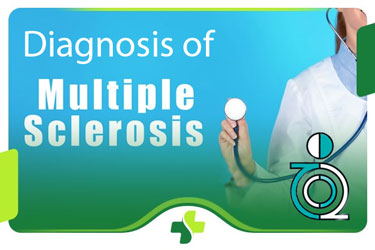
2025-08-30
Diagnosis of Multiple Sclerosis (MS)
Beginning of the diagnostic process:
Diagnosing Multiple Sclerosis (MS) can be complex and time-consuming, as the disease presents with a wide variety of symptoms that differ among individuals and may appear at different times. Some people may experience mild symptoms, such as gradual changes in physical condition without clear relapses, while others may face relapses or flare-ups that temporarily worsen symptoms.
An important point is that some symptoms, such as changes in movement, are easily noticeable, whereas others, like fatigue and sensory disturbances, may not be readily recognized. Moreover, there is no single test for diagnosing MS. Diagnosis requires a review of the individual’s medical history, neurological examinations, and a set of tests. During this process, other conditions with similar symptoms must also be ruled out.
McDonald Diagnostic Criteria:
The McDonald Criteria are a set of guidelines used by neurologists to make an accurate diagnosis of MS. First introduced in 2001, they have been regularly updated, with the most recent version published in 2017. These criteria help doctors distinguish MS from other neurological diseases with similar symptoms.
Tests and diagnostic steps:
Diagnosing MS usually requires a series of tests, including Magnetic Resonance Imaging (MRI) and, in some cases, lumbar puncture (spinal tap). MRI is especially useful in identifying brain and spinal cord lesions caused by inflammation. Additionally, other tests, such as evoked potentials (which measure nerve responses to stimuli), may also be performed.
Early diagnostic steps:
According to the National Institute for Health and Care Excellence (NICE) guidelines, general practitioners and neurologists should consider the common symptoms of MS that typically lead patients to seek medical care.
These symptoms include:
Reduced or lost vision in one eye, accompanied by pain when moving the eyes
Double vision
Sensory disturbances or weakness in the body that gradually spreads
Sensory changes in the back of the neck, known as “Lhermitte’s sign”
Problems with balance and walking
These symptoms usually last more than 24 hours and may persist for several days or weeks. Carefully recording the symptoms and noting their start and end times can greatly assist physicians in making a diagnosis.
Conclusion:
Diagnosing MS can be a lengthy process requiring multiple tests and examinations. The most important point is that every individual may experience different symptoms and diagnostic pathways. Therefore, staying calm and maintaining regular follow-up with specialists and reliable resources can be very helpful in managing the disease and improving your quality of life.
Source: MS-UK
Compiled by: Sara Khoshnoud (Education and Research Deputy Expert)
/End of message
Charity Foundation of Special Disease
@cffsd